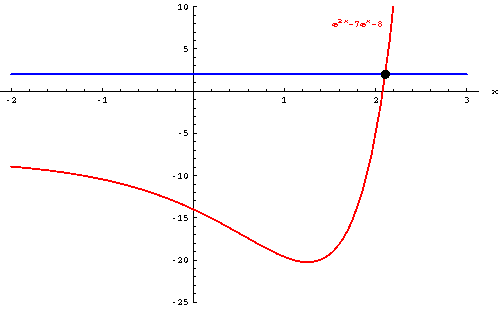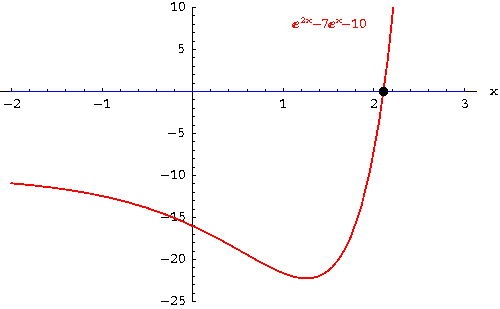 GRAPHS OF EXPONENTIAL FUNCTIONS
GRAPHS OF EXPONENTIAL FUNCTIONS  GRAPHS OF EXPONENTIAL FUNCTIONS
GRAPHS OF EXPONENTIAL FUNCTIONS 
GRAPHS OF EXPONENTIAL FUNCTIONS
By Nancy Marcus
In this section we will illustrate, interpret, and discuss the graphs of exponential functions. We will also illustrate how you can use graphs to HELP you solve exponential problems.
Solving an equation from a graph. When we solve an equation algebraically, we set the equation equal to zero and find those values that cause the equation to equal zero. When we solve an equation graphically, we look for points of intersection.
If there is one equation, we look to see where the graph crosses the x-axis. The x-intercepts are the solutions to the equation. The x-intercepts are those values of x that cause the function value to be zero.
If you are solving two equations graphically, you have two options. You can graph both equations and determine the value of x at the point(s) of intersection. You can also create a new graph by subtracting one function from another, graph the new function, and find the x-intercepts.
In the following examples, we will solve the equations algebraically and graphically.
Example 16: Solve the equation
![]() for x algebraically and graphically.
for x algebraically and graphically.
Algebraically:
1. Subtract 2 from both sides of the equation so that one side
of the equation is equal to zero ![]() .
.
2. If you rewrite ![]() as
as ![]() , you will see that the equation is a
quadratic in
, you will see that the equation is a
quadratic in ![]() This means you can solve for
This means you can solve for ![]() using the quadratic formula.
using the quadratic formula.
3. Solve for ![]() using the quadratic formula.
using the quadratic formula.

4. Then ![]() and
and ![]() . There is
no value of x such that
. There is
no value of x such that ![]() will be a negative answer.
Therefore, only
will be a negative answer.
Therefore, only ![]() is valid.
is valid.
5. Recall that we are not solving for ![]() , we are solving for x.
, we are solving for x.
6. Take the natural logarithm of both sides. The actual value
of x is the ![]() or 2.106204.
or 2.106204.
Graphically - Method 1:
1. Graph ![]() and graph g(x)=2 on the same coordinate axis and find the point(s), if any, of intersection.
and graph g(x)=2 on the same coordinate axis and find the point(s), if any, of intersection.

|
2. The graphs intersect at one point. (2.106204, 2). The solution is the value of x, or x = 2.106204.
Graphically - Method 2:
1. Subtract 2 from both sides of the equation ![]() to have
to have ![]() .
.
2. Call the left side of the equation f(x) and graph f(x). Call
the right side of the equation h(x) and graph h(x). Since the
right side of the equation is nothing more than the x-axis, you
will be looking for the x intercepts on the graphs of ![]() .
.

|
3. The graph of f(x) crosses the x-axis at x = 2.106204.
4. The solution is x = 2.1062404.
If you would like to review graphs of logarithmic functions, click on Example.

 S.O.S MATHematics home page
S.O.S MATHematics home page Do you need more help? Please post your question on our S.O.S. Mathematics CyberBoard.

Author: Nancy Marcus